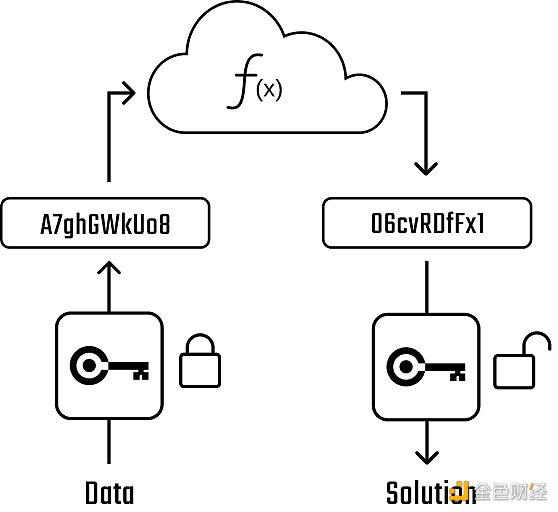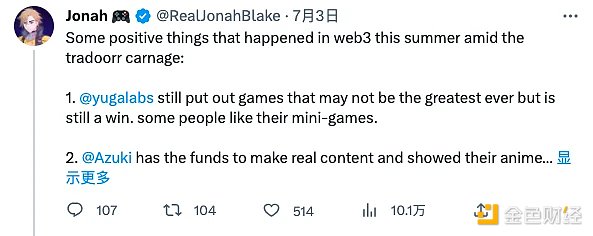Multicoin leading investment, gathering of experts, what is the magic of the first fully homomorphic encrypted blockchain developed by Fhenix?
What is the magic of Fhenix's first fully homomorphic encrypted blockchain, with leading investment and a gathering of experts?Written by: Idan Levin Translation: Deep Tide TechFlow
Fhenix is the first blockchain built on FHE, which is supported by end-to-end encryption, with a lead investment of $7 million in seed round from Multicoin Capital, and participation from Node Capital, Bankless Ventures, Robot Ventures, Tane Labs, HackVC, and Metaplanet.
What is FHE?
Fully Homomorphic Encryption (FHE) has been a theoretical academic concept since 2009, but recent progress by companies like Zama has made it possible for the first time to be used in production.
The magic of FHE lies in its ability to perform computations on encrypted data. Calculations on ciphertext (encrypted data) produce a new ciphertext that corresponds to the results of the operations on plaintext (unencrypted data).
- Overview of Ethereum distribution with a total circulation of over 120 million.
- Celestia’s large-scale airdrop, Eclipse’s release of Layer2 new solution, what other latest developments are there in modular blockchain?
- Chainalysis Research Mass Adoption of Cryptocurrencies in India, the Philippines, and Pakistan

The exact mathematical process behind FHE is complex and relies on lattice encryption, which is based on the difficulty of certain problems in lattice theory. The first practical FHE scheme was proposed by Craig Gentry in 2009, using an object called an “ideal lattice” to encrypt data and allow computations on encrypted data.
From the perspective of blockchain, FHE means that every transaction is encrypted before being sent to the memory pool, so even miners/proposers cannot see the content of blocks. But FHE is not just about encrypting the memory pool – the execution of block transactions is still fully encrypted, ensuring end-to-end confidentiality.
Fhenix is developing the first FHE blockchain (fhEVM), which will enable end-to-end encryption for public blockchains. The system is expected to revolutionize our perception of blockchain and provide two important guarantees:
-
Complete Confidentiality: FHE allows computations on encrypted data, which is often referred to as the “holy grail” of cryptography. With this feature, Fhenix’s system can ensure absolute confidentiality, as even nodes executing smart contracts cannot access any user data.
-
Elimination of Miner Extractable Value (MEV): Using Fhenix’s system, the entire memory pool is fully encrypted, preventing any entity from front-running users. MEV is one of the biggest and most painful problems in today’s public blockchains, undermining the fairness of the system. FHE has the potential to eliminate MEV, which is a very significant issue for the industry.
fhEVM aims to:
-
Be independent of cryptographic expertise: The design of fhEVM does not require any specialized cryptographic knowledge. It will typically support Solidity smart contracts with only minor changes, mainly adding privacy data types in smart contracts.
-
Be compatible with Ethereum tools: fhEVM will maintain compatibility with existing Ethereum tools.
-
Be user-friendly.
FHE will redefine confidentiality and fairness in Web3
In the Web2 era, end-to-end encryption and protocols like TLS/SSL have played a crucial role in protecting digital communications and confidentiality, as seen in applications like WhatsApp (one of the most widely used messaging apps in the world, using end-to-end encryption) and the majority of the Internet today that uses TLS. It seems crazy to use an e-commerce website that doesn’t support TLS communication.
The emergence of FHE is expected to bring this high level of encryption into the blockchain field. FHE allows computation on encrypted data to protect the confidentiality of user data in the best possible way, better than any previous technologies (TEE/ZK).
In addition, FHE solves the significant problem of Miner Extractable Value (MEV), which is one of the biggest challenges faced by public blockchains today and cannot be solved by other technologies (all other technologies, such as Flashbots, only redistribute MEV in some way to make it fairer, but all proposed solutions are just permutations and combinations of this problem, rather than a fundamental solution). MEV undermines the legitimacy of public blockchains by eroding the concept of fairness in the system. That’s why MEV has become one of the hottest topics in the industry, with billions of dollars invested. FHE will eliminate MEV and restore fairness to the system.
We believe there is no better team on Earth than Fhenix to build this system. There are very few people in the world who have the expertise to design such a system, and the combination of Guy Zyskind’s track record in blockchain and Guy Itzahki’s rich experience in confidential systems is extremely rare. They have gathered the best partners in the world – Zama as a technical partner, including LianGuaiscal LianGuaiillier, one of the top experts in the field of FHE, and professors Shai Halevy and Srini Dev Adas.
Israel is a leader in the field of cryptography and has a wealth of talent. The fusion of Israeli expertise and advanced cryptography is unique and unparalleled worldwide. We believe they will play a key role in bringing end-to-end encryption to the Web3 industry.
We will continue to update Blocking; if you have any questions or suggestions, please contact us!
Was this article helpful?
93 out of 132 found this helpful
Related articles
- What makes Fhenix’s first fully homomorphic encrypted blockchain so magical, with Multicoin leading the investment and a gathering of experts?
- Protecting the Future of the Banking Industry Exploring the Synergy between Blockchain and Network Security
- Overview of TON Blockchain Ecological Applications, 551 DApps Covering 16 Tracks
- What are the legal risks of blockchain games in the new trend of NFT digital collections?
- Is NASA interested in crypto too? Their own researchers are testing blockchain storage on the moon base.
- Celestia, a modular blockchain, launches its own cryptocurrency. Take a quick look at the airdrop details and token economy.
- Why is regulatory compliance considered the final step in decentralization for blockchain?






